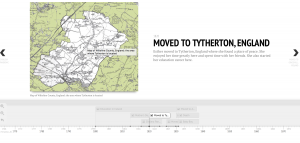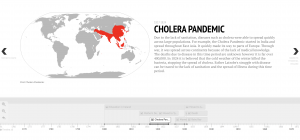
In the process of compiling information for our timeline on Esther Latrobe’s life, I have noticed that there are various modes of representation we could use. There are so many unique ways in which ideas can be represented visually, including diagrams, timelines, charts, and other pictorial methods. I agree with Grafton’s point, “graphic representation is among our most important tools for organizing information.” (Grafton 10) Two modes of representation in particular, chronology and geography, have clarified historical events by providing the time and place of these occurrences. Chronology provides structure and organization to all of these events by providing specific times. Geography on the other hand pinpoints the location of events so you can see what is happening on a global scale. While chronology and geography provide important information about history, it does obscure certain aspects of these events. For example, these two modes of representation don’t illustrate cause and effect and don’t dive into the details of history. They don’t analyze why certain things happened or how they occurred either. No, a line doesn’t tell us a full story, but it definitely does help with chronology; “from the most ancient images to the most modern, the line serves as a central figure in the representation of time.” (Grafton 14)

While I don’t believe a line can tell a comprehensive story, lines can be manipulated and shaped to try and represent more than just linear information. Changing length, color, or boldness of a line could all be indicators of something different in a visual representation of a historical event. It is difficult for a line to tell a story because “historical narrative is not linear. It moves backward and forward making comparisons and contrasts, and branches irregularly following plots and subplots.” (Grafton 20)
[iframe src=’https://cdn.knightlab.com/libs/timeline3/latest/embed/index.html?source=1HEAoVGg_5j-psdjOKOBoOWKUpRTtp3x9L9dA8a5qASE&font=Default&lang=en&initial_zoom=2&height=650′ width=’100%’ height=’650′ webkitallowfullscreen mozallowfullscreen allowfullscreen frameborder=’0′></iframe]
Jessica Hom is currently a sophomore at Bucknell University. At Bucknell, she plays on the varsity softball team and is currently undeclared. She is from Syosset, NY and is a graduate from Syosset High School.





